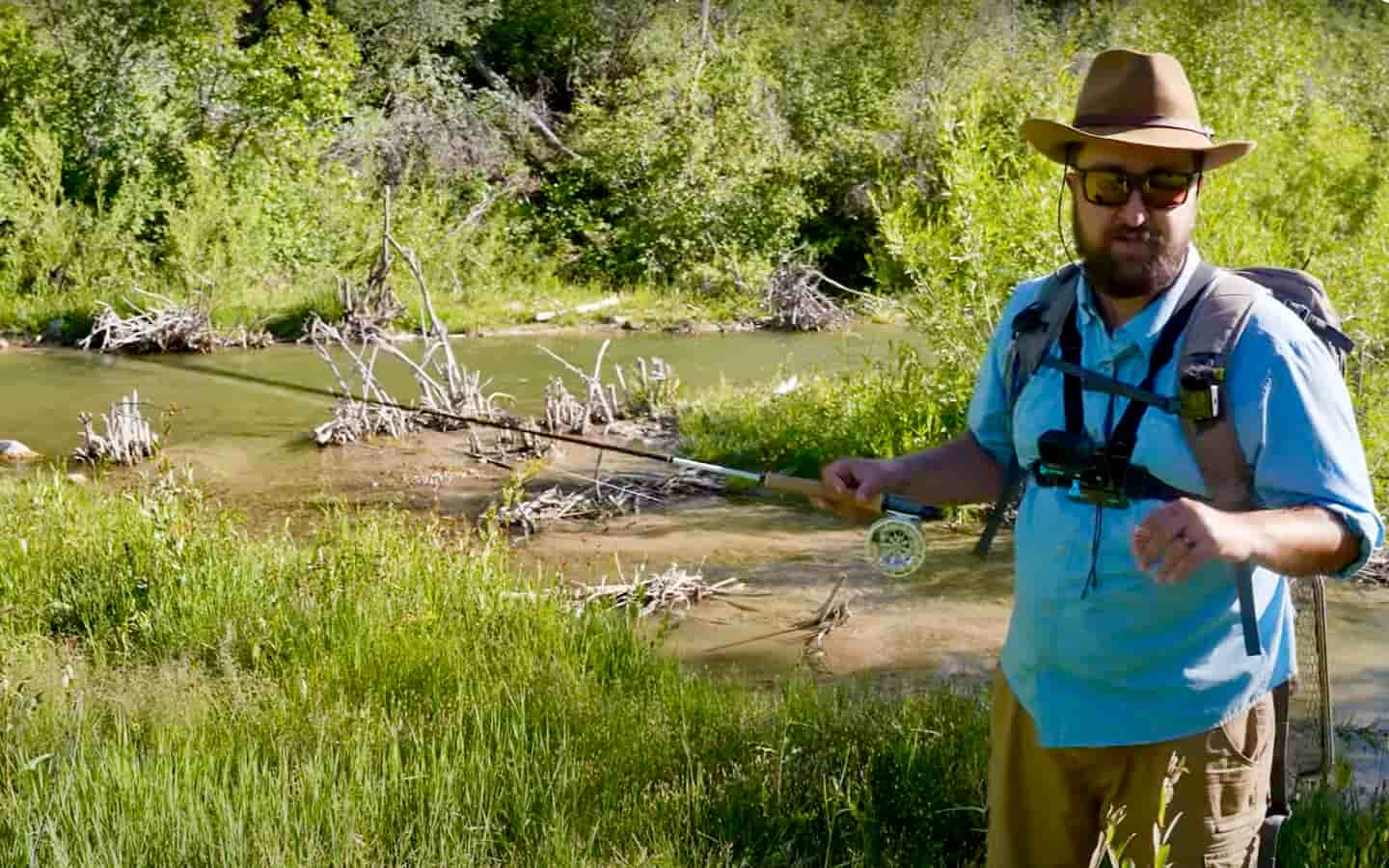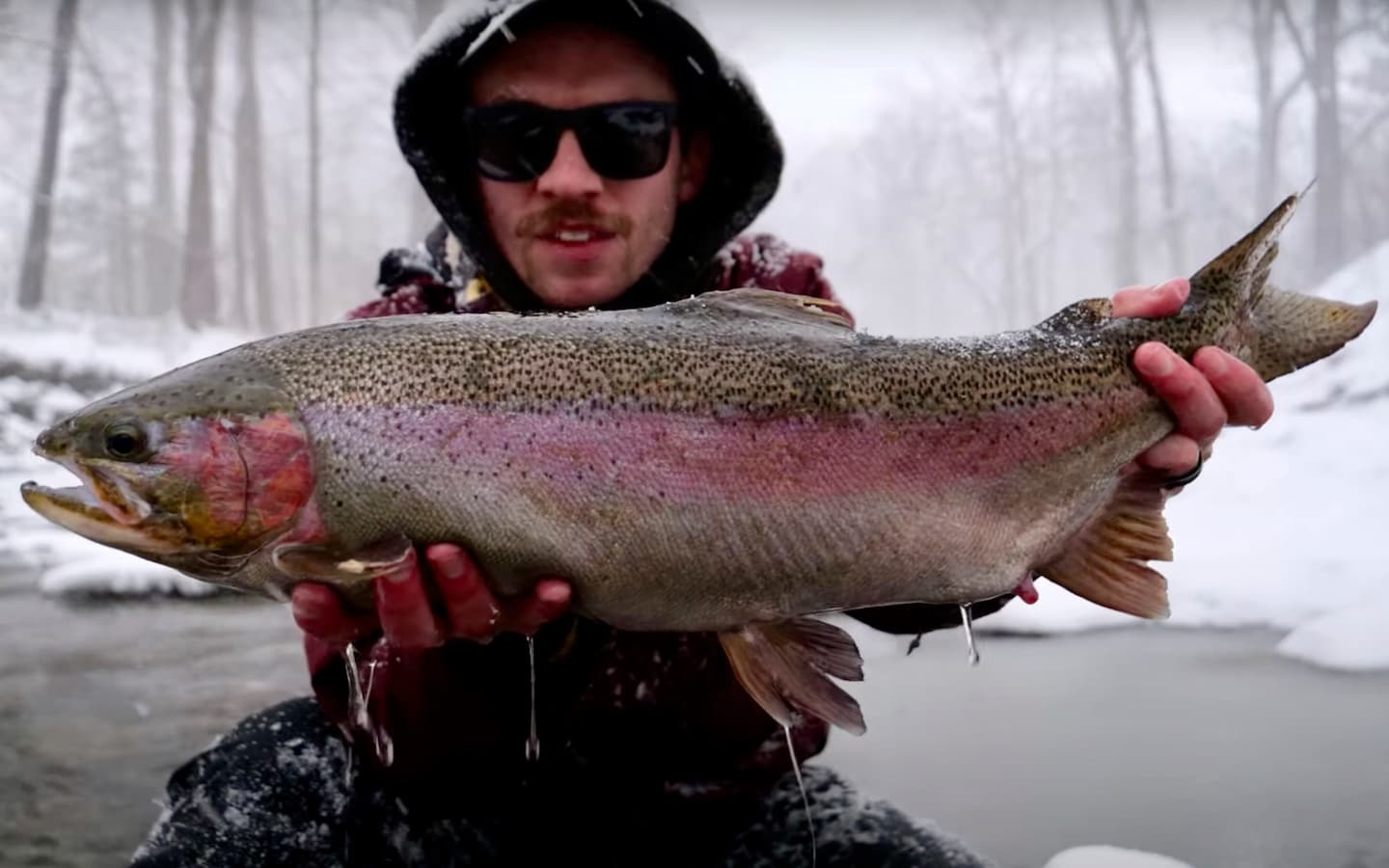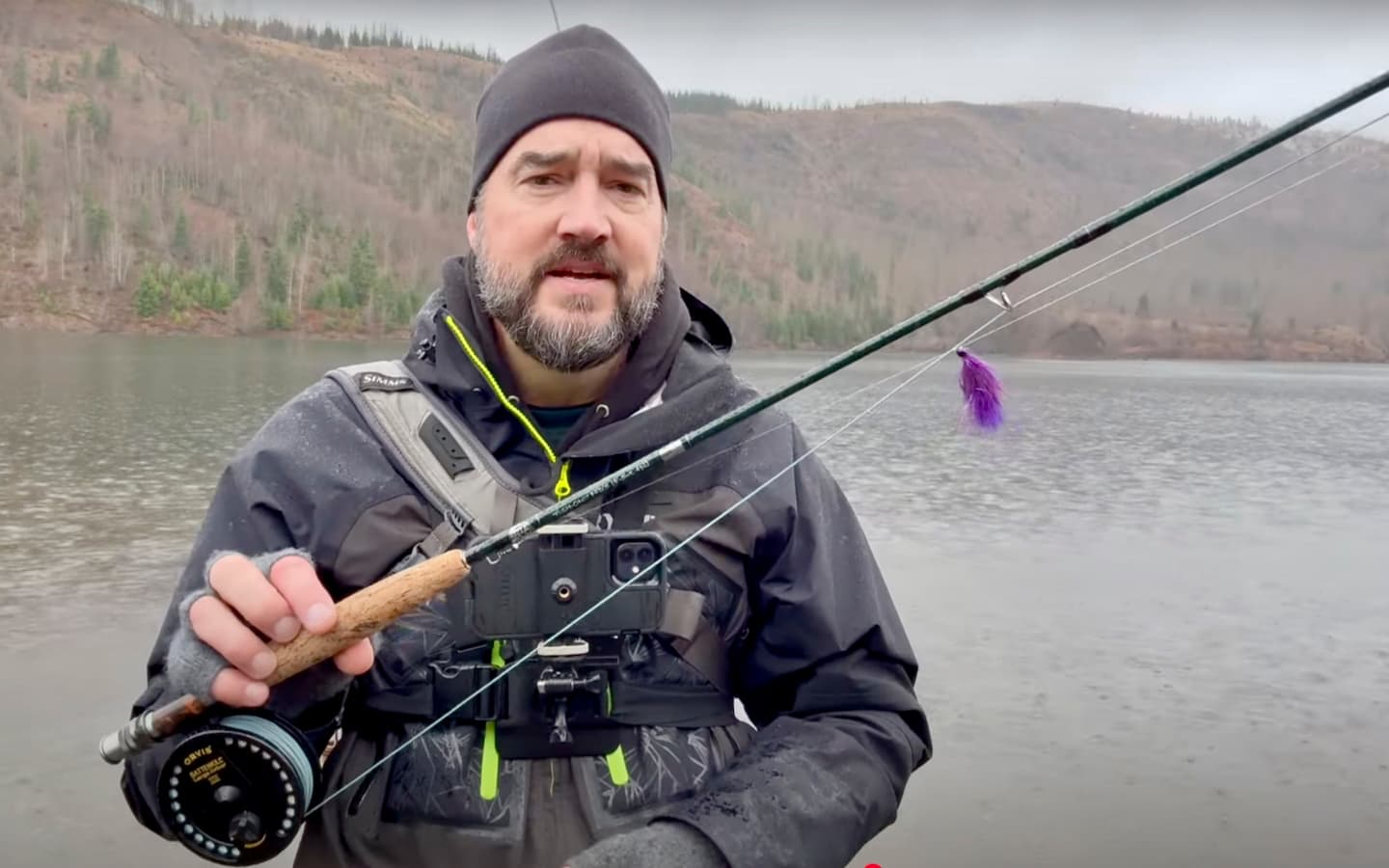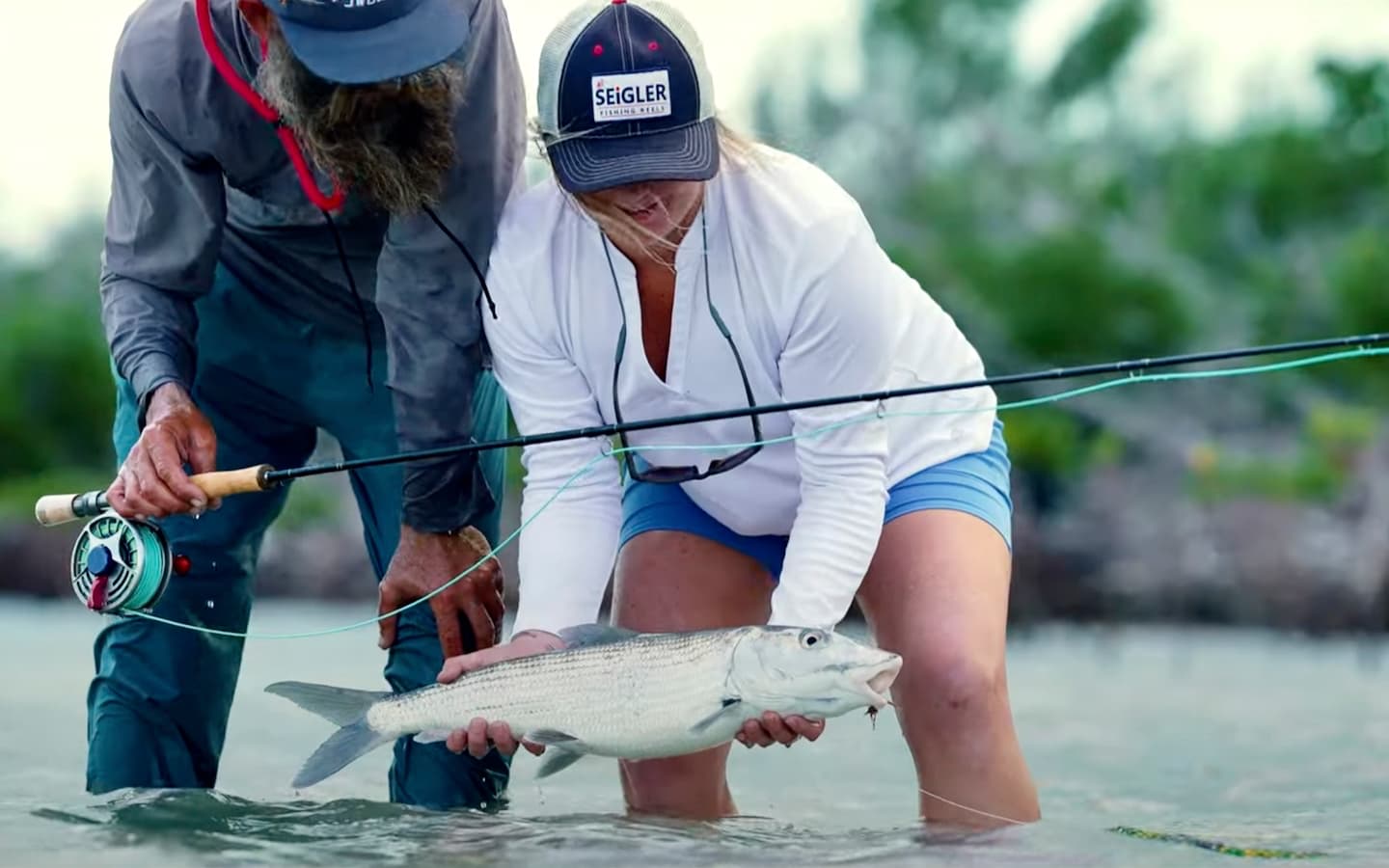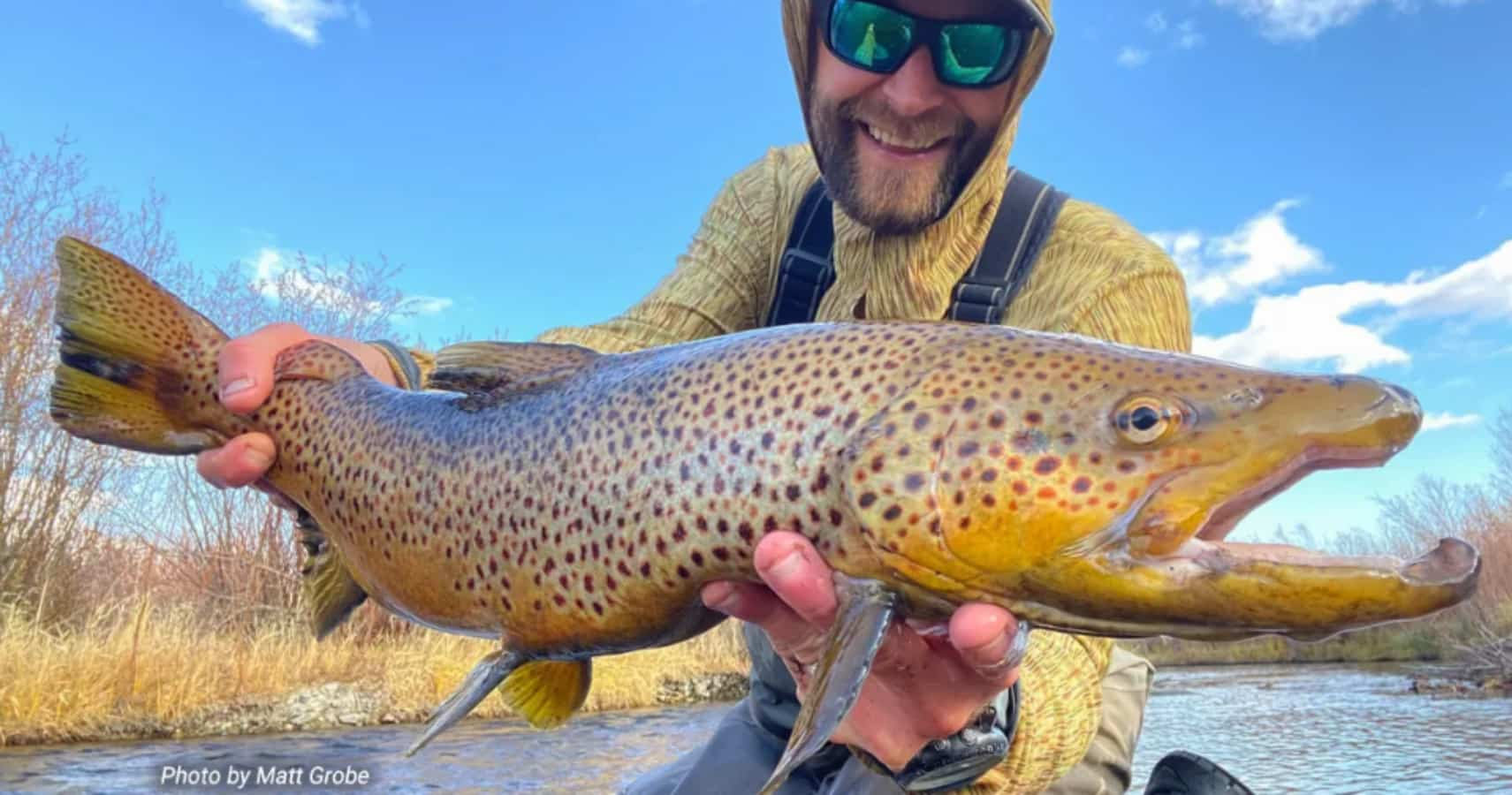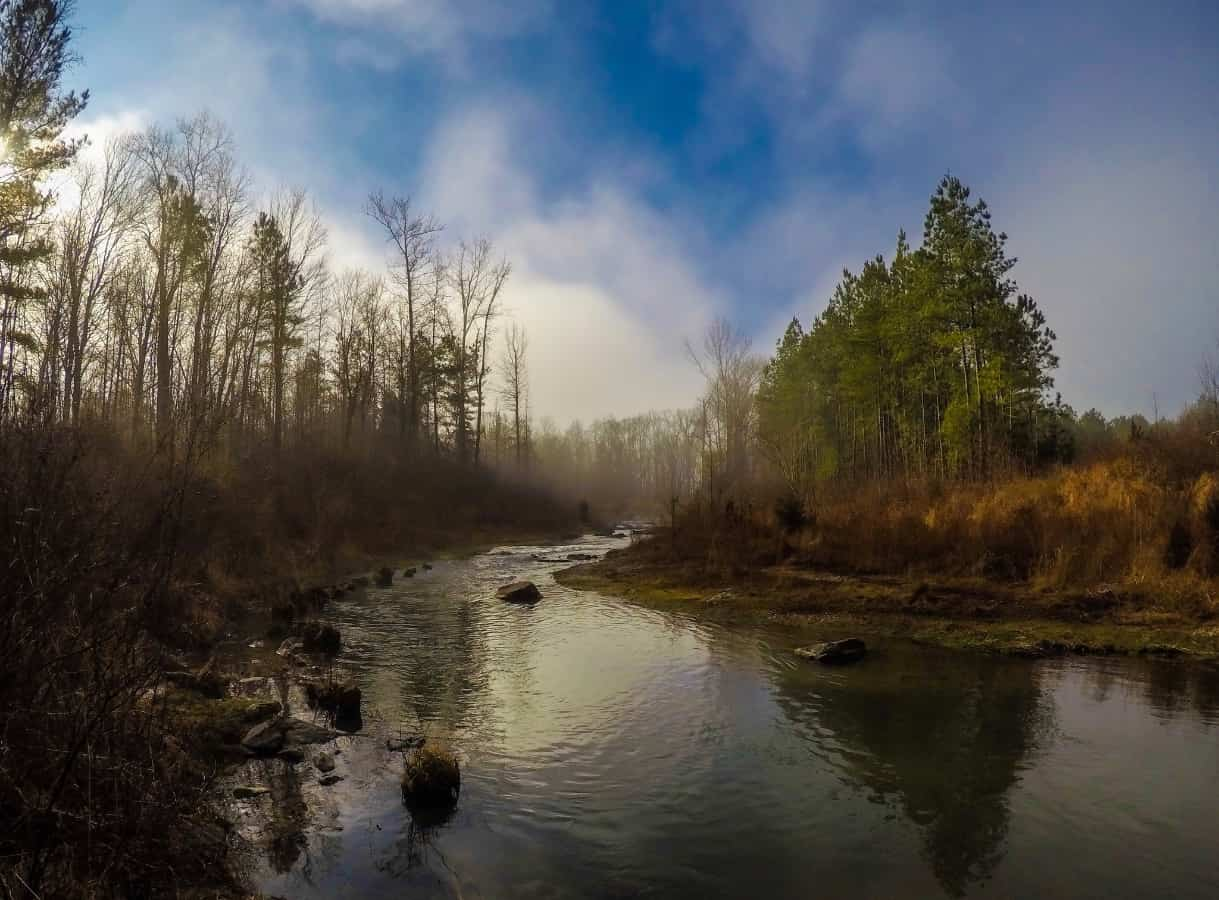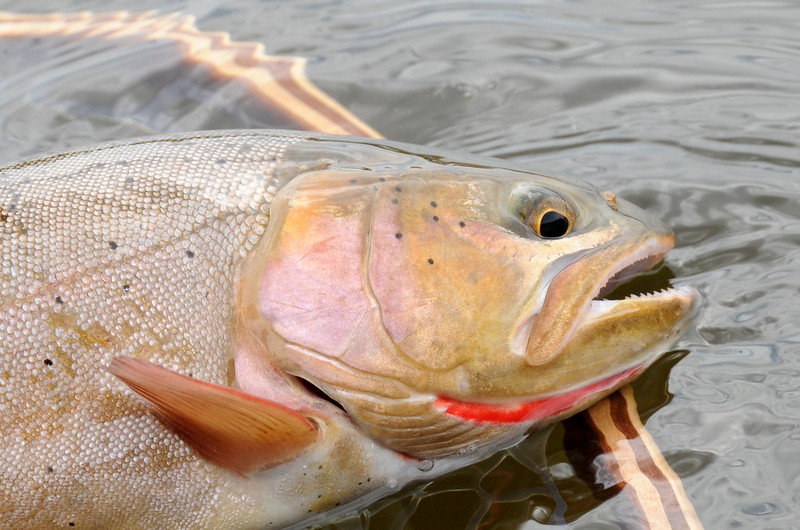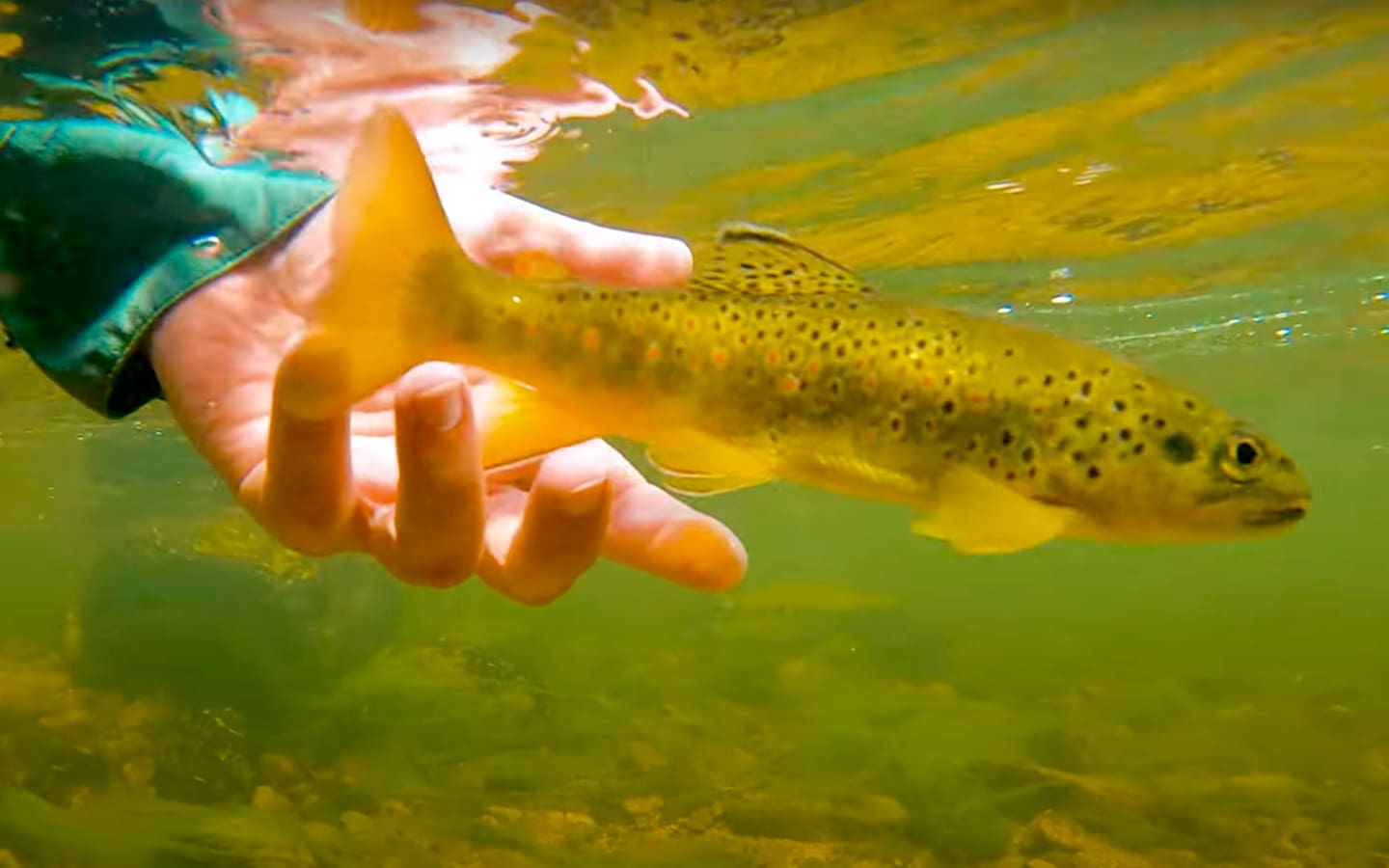A Light Cahill Parachute With a Twist
Producer: tightlinevideo
These past couple of years here in the Mid-Atlantic, the light Cahills have been one of the premiere hatches. For me anyway, they are the last major hatch before waters warm up so much, to the point where I can no longer conscientiously catch and release trout. Prior to the hatch, trout readily feed on light Cahill nymphs trying to make it to the water’s surface, and on emergers struggling in the surface film. Of course they’re extremely fond of the winged adults riding on top of the water. When egg-laden spinners return to the water to deposit those eggs is when the fun really starts. After the eggs are deposited, the spinners at the very end of their life cycle fall spent on the water’s surface and the trout go absolutely nuts for such an easy meal.
I use this parachute-style Light Cahill pattern to imitate nearly all of the insect’s life cycle, save for the nymphal stage. I do tie my parachutes quite differently than most people and this method may take a while for you to get accustomed to.
The fly starts with a Lightning Strike DF1 dry fly hook in size 14. I make sure to mash the barbs on these prior to tying. If nothing else, it makes unhooking fish near dark much easier and it’s certainly better for fish already stressed by marginal water temperatures.
For thread, I’ve loaded a bobbin with a spool of Semperfli Classic Waxed 12/0 thread, in order to keep thread build-up and weight to a minimum. The stuff is nice and strong too, which allows me to tie with a good bit of thread tension. Get the thread started on the hook shank, leaving a full eye-length space behind the back edge of the hook eye. After taking a dozen or so wraps rearward, lift up and snip off the excess tag. Return your tying thread forward to a point about 2/3 of the way up the hook shank.
White polypropylene floating yarn is used for the wing post. A card-width segment is more than enough for the fly. Using tight rearward wraps of tying thread, secure the polypro to the top of the hook shank. With it well anchored, lift the rear portion up and snip it off at a shallow angle. Take forward thread wraps until the material is anchored up to a point about 1 1/2 eye-lengths behind the back edge of the hook eye. Then, take a wrap or two in front of the material around just the hook shank.
Lift up the post and twist it clockwise, as if you’re looking down on it. Really twist it up. Bring the free end down to the hook shank above your tying thread. The twisted poly pro should furl on itself, like a cinnamon twist. Now anchor the free end with tight wraps of tying thread. Try to keep the material on top of the hook shank while you do this. End with really tight rearward wraps. Then, using the hook eye as a guide, snip the excess material off at an angle. Bind the snipped off material down with wraps of tying thread, then relocate your thread to about the midpoint of the hook shank. The resultant post should be fairly stiff and neatly contained, unlike an open strand or strands of polypropylene yarn.
A few fibers from a wood duck flank feather are used to form the tail of the fly. A dozen or so are all you need. Try to keep the fiber tips aligned as you strip them free from the stem. Carefully measure to form a tail a hook shank in length, then transfer that measurement rearward to the start of the hook bend. Take touching rearward wraps with your tying thread, pulling up and toward you on the fibers as you go. This will help them to stay right on top of the hook shank. End with your tying thread, once again, at about the midpoint of the shank, and snip the excess butt ends of the wood duck fibers off close.
Light Cahill-colored Superfine dubbing is used to form the entire body of the fly. Pull a fairly ample clump free from the packet and pull it apart several times to generally align the fibers. With the fibers parallel to your tying thread, begin forming a slender dubbing noodle on it. Don’t twist the lower part of each clump – this will allow you to weave in the next clump to make a really cohesive noodle. The noodle should be about 3 1/2” in length and very slender. Start taking wraps with the noodle so the dubbing begins right at the base of the tail. Take touching wraps forward with it to build up a lightly tapered body on the fly. Fill in the entire area, both fore and aft of the wing post. End with your tying thread in front of the post, on the near side of the fly.
A single feather from a cream-colored cape is used to hackle the fly. Its fibers should match the size of the hook, here a 14, close enough. If you don’t have a hackle gauge, you can also measure the fibers on the post, they should extend a little past the base of the tail, like so. With the shiny side of the feather facing you, pull down and strip off the lower webby fibers. Then, take a few more from just the top edge of the stem. This will help the feather to wrap correctly. Snip the butt end off so you’re left with about 1/4” of bare stem. With the shiny side of the feather facing forward and the extra bit of bare stem toward you, lay the bare part of the stem against the wing post, and begin taking thread wraps to secure it. Take touching wraps around the stem and the post, going up about 1/8”. Try to keep these wraps nice and smooth, and once again, end with your tying thread in front of the post, on the near side of the fly. You can then snip the excess butt end of the stem off close.
To make the next few steps easier, re-orient the fly in the jaws of your tying vise, so it points down, just shy of vertical. Get hold of the hackle feather by its tip and begin taking touching wraps with it behind your tying thread and up the post. After 7 or 8 turns, use your tying thread to anchor the feather’s tip to the post, above the hackle wraps. Use only 3 wraps to do this then snip the excess hackle tip off close. Pick up your whip finish tool and use it to do a 4 or 5 turn whip finish on the post. Be gentle doing this, so the wraps don’t pull off. Once the knot is well-seated, snip or cut your tying thread free. You can now reorient the fly back to its normal position in your tying vise and marvel at your handiwork.
I like to snip the post off fairly short, a little less than a hook shank in length, so the fly isn’t top heavy. It’s very important to pick up your head cement, here Sally Hansen Hard as Nails, and apply just a single drop to the whip finish. This will prevent it from unraveling and, as the adhesive dries, it will wick down the post and cement the hackle wraps to it, making the fly incredibly durable.
With this method, the concave side of the feather is down, kind of like a real parachute. And the underside of the fly, which the trout see, is remarkably clean. The hackle fibers might appear to the trout as the legs of the dun or maybe the spent wings of a spinner. Perhaps most importantly, because this fly is often fished toward dark, the hook eye is absolutely clear of any obstruction. Like I said this method takes some getting used to but once you get the hang of it, it’s rather quick and easy.
A Glimpse of Swedish Lapland: Fly Fishing Blues
A Love Letter to Fly Fishing
